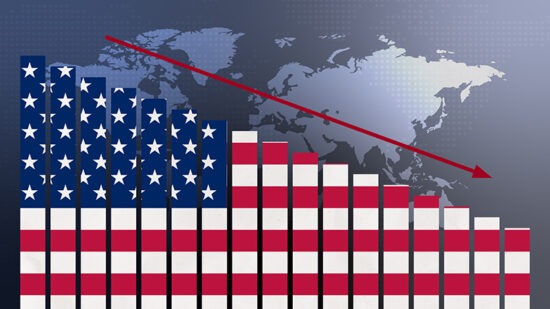Reminder of the fragility of the markets
The market fragility of concern to us lies mainly in the growing lack of flexibility, i.e. the ability to absorb any shocks, which affects most of the global economy.
This fragility stems from the debt levels of governments, corporations and individuals, which the central banks have been perpetuating through massive subsidies since 2009.
Since 2000, (public and private) indebtedness has risen from 200% to 280% in the United States, 420% to 510% in Japan, 180% to 320% in Greece, 180% to 400% in Spain and 120% to 300% in China. These levels drain potential growth, which in its weakened state in turn prevents debt ratios from falling. The vicious circle is under way, making the economy highly vulnerable to the next cyclical slowdown, just as it exposes it to any increase in the cost of money.
Collision course
These two pitfalls are now coming into view at the same time, which makes the central banks’ task all the more difficult as they are caught between the need to keep nominal interest rates very low and the need to maintain their credibility after years of monetary creation, responsible for asset bubbles, poor capital allocation and widening social inequalities.
As such, a year after putting a stop to its quantitative easing, the Federal Reserve has just initiated its first cycle of monetary tightening since 2004, with the signs of pressure on wages starting to appear. And should energy prices eventually stabilise in 2016, inflation expectations might then well be reversed, compounding pressure on the Fed. In Europe as in Japan, central banks have started to baulk at the idea of further intervention.
At the same time, though, after six years of expansion, US manufacturing indicators have dropped to recession levels while spending on services has also begun to fall.
China is still slowing as well. The economic and interest rate cycles are set to collide. The monetary illusion is drawing to a close.
Safe haven in Europe?
A cyclical lag meant that Europe was one of the few places in the world to show economic improvement in 2015. Even so, despite a 50% drop in energy costs, historically low interest rates and a 25% drop in the value in the euro, annual growth only reached about 1.5%, which is not enough to stabilise debt and kick-start employment.
And this performance was ultimately achieved at a time when the German powerhouse started to lose steam and began to encounter its political and financial difficulty, namely tension in the ruling coalition over immigration policy.
As such, Europe enters 2016 in a fragile economic position, which in turn raises the issue of its political vulnerability, as the European project surely cannot afford to suffer a Japanese-style “lost decade”.
The emerging world: investors’ bogeyman
China, and in its wake the whole of the global economy, is still paying the price of the huge economic stimulus programme of 2008, which saved the country from catastrophic economic collapse, but only at the cost of excessive lending growth and a production capacity surplus that remains to this day.
The economic shift towards tertiary activity has already brought down commodity prices and affected the whole of the emerging world to varying degrees.
However, it also makes many industries worldwide less profitable by contributing significantly to the global capacity surplus.
Much like the United States, but to an even greater extent, China is also facing the risk that it will struggle to fully protect its services sector from the effects of an industrial slowdown in 2016.
The Chinese authorities’ intention to stabilise this slowdown through accommodative monetary and policies will have to overcome the outflow of capital out of the country, which has become a steady stream since August, as well as bank balance sheets riddled with non-performing assets.
To solve this tricky problem, China may well have to abandon its much trumpeted goal of maintaining a stable currency. A substantial devaluation of the renminbi would ease its own economic burden, but hasten the export of its industrial overcapacity problems to the rest of the world, emerging and developed countries alike.








